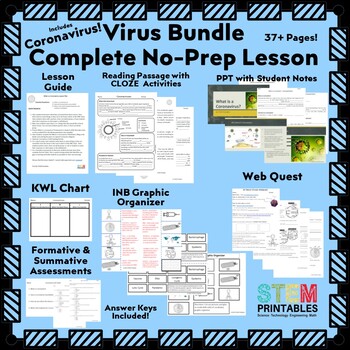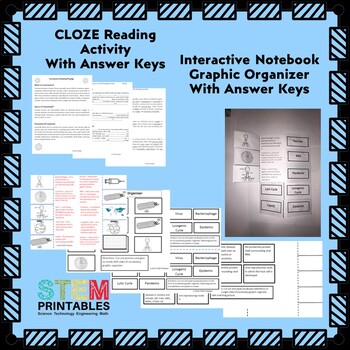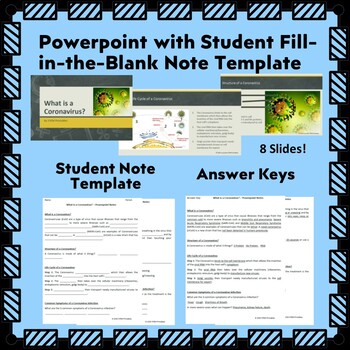Virus Complete No-Prep Lesson Bundle including Interactive Notebook Activity
- Zip
- Easel Activity
Products in this Bundle (3)
Bonus
Also included in
- Updated! This bundle includes everything you need to teach your students about viruses (including Covid-19) and the process of making vaccines.**Updated 3/14/21 - This bundle contains products that have been updated to reflect the most current CDC Guidance and information regarding new Covid-19 viruPrice $9.00Original Price $12.50Save $3.50
Description
Updated! This complete No-Prep mini-lesson includes everything you need to teach your students all about viruses. This lesson also covers transmission and life cycles of the Coronavirus (including COVID-19)!
Included in this complete No-Prep Lesson!
- Teacher Lesson Guide
- All About Viruses Interactive Webquest
- Interactive Notebook Virus Vocabulary Graphic Organizer
- KWL Chart Activity
- Power point presentation with student fill-in-the-blank notes
- CLOZE Reading Activity with color-coded Coronavirus Illustration
- Optional 2nd CLOZE Reading Activity
- Exit Ticket for a quick formative assessment
- Answer Keys for all handouts and activities!
Powerpoint Presentation with Student Fill-in-the-Blank Notes & Answer Key
Slide 2 - Explains what a Coronavirus is
Slide 3 - Explains the typical Coronavirus Structure
Slide 4 - Explains the life cycle of a Coronavirus
Slide 5 - Explains the common symptoms of a Coronavirus infection
Slide 6 - Explains how the typical Coronavirus is spread
Slide 7 - Explains how to protect yourself from a Coronavirus infection
Slide 8 - Explains how to treat a Coronavirus infection
Google Classroom Version Now Available! - Click Here
As new activities are added to this mini-lesson you will be notified by email and can download for free!
Tips for Customers
- Click the Green ★ to follow our store and get notifications of freebies and new products!
- Leave feedback to receive TpT credit for use on future purchases.
- Questions? Please contact us in the Product Q&A Section.
Terms of Use
All rights reserved by STEM Printables
This product is intended for use by the original purchaser only.
Sharing this product with others, distributing via any means, or posting online is strictly prohibited.
Failure to comply is a copyright infringement and a violation of the Digital Millennium Copyright Act (DMCA). Clipart and elements found in this PDF are copyrighted and cannot be extracted and used outside of this file without permission or license.






